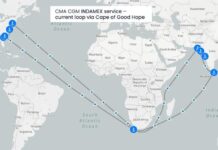
North Sea Port is set to intensify its collaboration with the Canadian ports of Montréal, Québec, Saguenay, Sept-Îles, and Trois-Rivières.
This partnership aims to strengthen trade links between the Saguenay-Saint Laurent Sea corridor and North Sea Port, with Canada ranking as the port’s fourth-largest trading partner.
“Canada is North Sea Port’s fourth most important trading partner in terms of cargo throughput. Our location in Western Europe is of great strategic importance for cooperation with the ports of Montréal, Québec, Saguenay, and Sept-Îles en Trois-Rivières. Cooperation with these five Canadian ports can only be beneficial,” explained Maarten den Dekker, Chief Sustainability and Digital Officer of North Sea Port.
A formal agreement has been signed between the Dutch and the five Canadian ports, all located in the southwest region of the country. This new initiative builds upon a previous 2018 cooperation agreement between the Port of Québec and North Sea Port, now extending to include Montréal, Saguenay, Sept-Îles, and Trois-Rivières. The agreement outlines a framework for concrete initiatives in trade, innovation, and energy transition.
Key objectives include expanding the bulk sector and optimizing logistics chains connecting the Canadian hinterland of the Saguenay-Saint Laurent corridor with North Sea Port and northwestern Europe. The ports will also collaborate by sharing knowledge and best practices to enhance port planning and operations.
Additionally, the partnership is anticipated to foster technological advancements and circular economy initiatives, facilitating cooperation between businesses, research institutions, universities, and startups. By exchanging expertise and successes, the ports aim to broaden networks and drive innovations, such as the use of artificial intelligence in port operations.
Another significant focus of the cooperation is sustainability and reducing carbon footprints. Priority areas include low-carbon energy production, the greening of port areas, alternative fuels, and energy efficiency measures.





